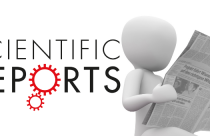Year in Review: How Has 2020 Been for You?

Well, that’s a question which can be answered almost unanimously. “Pathetic” might be the first word that comes to mind when we look back at the year gone by. With 2021, things are gradually crawling back to the new normal. However, looking back at 2020, we would like to think that the journey has been rather eventful.
The Global Crisis and its Consequences
With the sudden lockdown all across the world in the early months of 2020, many have had to stay back at home. Several schools, universities, and workplaces had closed down as a precautionary measure globally. While some of us were coping well with the remote working arrangement, others, however, were trying to balance this in the midst of active research, courses, etc. Researchers in particular have had to stall their work for an indefinite period of time. Amidst this crisis, we pledged to support the global researcher community through different means and assist them in their publication journey.
Impact of the Lockdown on the Mental Health of Researchers
One of the many ways in which the pandemic had affected us was the work from home situation. With the strict social distancing norms, people across the globe were advised to remain within their homes and continue working from home. While this was common in corporate organizations, researchers were not quite aligned with this new remote work system.
PhD and post-doctoral researchers often feel exhausted, overworked, and worry about their future. The stress and pressure of academic life can be relentless, leading to depression and anxiety. Disturbingly, it is becoming common among young researchers, especially prevalent in life sciences and engineering. However, the situation has worsened with the pandemic and the consequent lockdown taking over. As active member of the community, we shared a few tips on preserving mental health. These tips might not have changed the situation completely but may be helpful in coping with it.
Academic Community Stood United against the Pandemic
Almost at the same time, the whole of academic community got together to fight out the pandemic. COVID-19 had led several publishers to make all the research papers on COVID-19 open. In fact, more than 30 leading publishers committed to make all their COVID-19 and coronavirus-related publications, open to the public.
With the sudden lockdown and travel ban, there had been several researchers who could not participate in conferences. eLife hosted online seminars to support early-career researchers in presenting their research online instead of in-person. These online seminars were hosted twice a week. With each of these open sessions presided over by an eLife editor, three early career researchers (ECRs) were allowed to present a 10-minute talk with five minutes for questions afterwards. Interestingly, the most important criterion to qualify for these sessions was “been accepted to present a talk at a conference that has been cancelled or postponed due to COVID-19 with no virtual talk offered as a replacement!”
Misinformation Spread at the Highest Speed
The COVID-19 pandemic is the first since the rise of social media. This meant that misinformation would spread faster and further than ever before. For some, this leads to a confusing “information overload.” While most people who share too much information, some of which may be misinformation probably mean well, the consequences can be serious.
This also paved way for the two most famous infamous retractions of this year. The Lancet and The New England Journal of Medicine (NEJM) retracted two high-profile papers after a company declined to make the underlying data for both available for an independent audit, following questions being raised about the research. The Lancet paper, which claimed an antimalarial drug, hydroxychloroquine, touted by ex-President Donald Trump for treatment of COVID-19 could cause serious harm without helping patients, had had a global impact, halting trials of one of the drugs by the World Health Organization (WHO) and others. The high-profile retractions of two COVID-19 studies stunned the scientific community earlier this year and prompted calls for reviews of how science is conducted, published, and acted upon.
Research Funding Went into a Toss Post COVID
With the attention of the whole world focused on COVID-19, other issues had taken a back seat. This is certainly true of the scientific community, where many were re-directing their efforts towards research into COVID-19. In some places, researchers with medical expertise were even helping to treat patients.
The research community was being affected by the pandemic in many different ways. Research funding is also being forced to respond to COVID-19. While many grant applications had been slowed, or put on hold, some funders were offering fast-track funding for projects related to COVID-19. Many laboratories were idle. Safety for everyone was the first priority, including the safety of clinical trial participants. Therefore, many clinical trial sites were closed, and the research put on hold. However, with time, the doors to research are slowly reopening around the world, but the medical research landscape has changed. COVID-19 is now a variable, directly or indirectly, and must be taken into account. New protocols will be part of our routines. The first change will be daily screening of research staff for symptoms of COVID-19 infection.
Go Digital Became the Mantra
Although online learning had gradually been gaining traction over the past decade, the pandemic forced a massive shift to occur in a very brief time period. This massive sudden shift had left many professors, students, teachers, and researchers feeling unprepared for their coursework. Some of the difficulties included obtaining the proper equipment, lack of support from administration, and simple technological problems. However, despite these difficulties, the pandemic can be seen as an opportunity to transition to a more tech-friendly academic model. This is how digital or remote classrooms came into being and helped students and teachers learn new ways and offered some tips and tricks for smoothing the transition.
Amidst the Crisis, Journal Citation Reports 2020 Was Released
As they say, the show must go on! Keeping that note in mind, Clarivate Analytics released the Journal Citation Reports for this year. More than 12,000 journals from 83 countries across five continents and 236 research categories in the sciences and social sciences had been added in this year’s list. 351 new journals had been added to the JCR this year, out of which 178 were fully open access. One of the main highlights of this year’s JCR was the focus on self-citation. The JCR is entitled to monitor and exclude journals that demonstrate anomalous citation behavior including where there is evidence of excessive journal self-citation and citation stacking. With this objective, this year, Clarivate had suppressed 33 journals from to support the integrity of the reports, representing 0.27 per cent of the journals listed.
Celebrations Continued with the Peer Review Week and Open Access Week
Gradually and slowly, while coping with the new normal, the month of September was almost at our doorstep and so was Peer Review Week 2020! With the global lockdown being extended for months, there had been a lot of uncertainty across all sections of the society, the research community being no exception. However, this did not dampen our spirits and the academic community got together for the Peer Review Week 2020, keeping the theme for this year in mind, Trust in Peer Review.
Peer Review Week 2020 was followed soon after by International Open Access Week 2020. Diversity, equity, and inclusion must be consistently prioritized year-round and integrated within the functioning of the academic publishing process. International Open Access Week is an important opportunity to strike new conversations and create connections across and between communities. This thought led us to the celebration of the Open Access Week this year, along the theme “Open with Purpose: Taking Action to Build Structural Equity and Inclusion.”
Last but not the Least, the US Elections and the New US President
Joe Biden will soon be president of the United States, and scientists the world over are breathing a collective sigh of relief. Researchers are hopeful that much of the damage can be repaired. But there are a huge number of challenges that Biden would have to face, while tracing the footsteps of Trump.
The year 2020 has been remarkable so far. We still have one more month to go and we can’t wait for this year to end. But this year also given us the chance to step back, think and sort out our priorities; both as academics, as human beings. Let us hope to make the better choices in the coming year.









